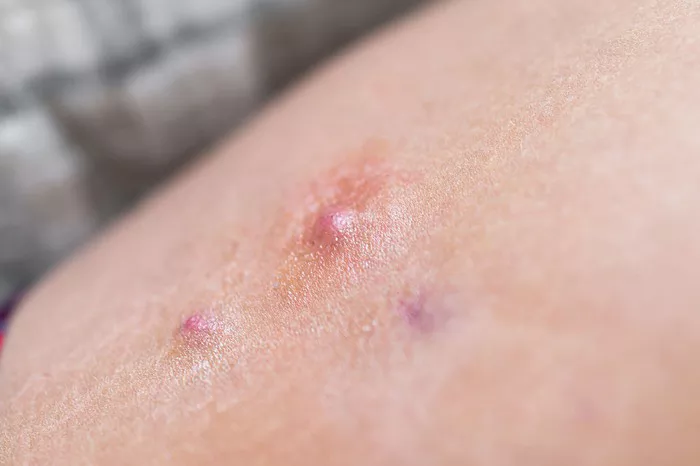Hidradenitis Suppurativa (HS) is a chronic inflammatory skin condition characterized by painful, recurrent nodules, abscesses, and sinus tracts in intertriginous areas, such as the axillae, groin, and inframammary regions. These lesions can significantly impact patients’ quality of life due to pain, scarring, and psychological distress. Despite various treatment options available, many patients struggle with inadequate symptom control and disease management.
Amidst the array of treatments being explored for HS, Botox (Botulinum toxin type A) has emerged as a potential therapeutic option. Traditionally known for its cosmetic applications in reducing facial wrinkles, Botox has garnered attention for its therapeutic benefits beyond aesthetics. This article delves into the efficacy of Botox in managing Hidradenitis Suppurativa, its mechanism of action, clinical evidence supporting its use, and considerations regarding its pricing and content.
Understanding Hidradenitis Suppurativa
Hidradenitis Suppurativa is a debilitating dermatologic condition characterized by inflamed, painful nodules and abscesses, often leading to sinus tract formation and scarring. It typically manifests in areas rich in apocrine sweat glands, such as the axillae, groin, and perineum. The exact etiology of HS remains elusive, but it is believed to involve a combination of genetic predisposition, environmental factors, and immune dysregulation.
Current Treatment Landscape
Treatment strategies for HS aim to alleviate symptoms, reduce inflammation, prevent recurrence, and improve patients’ quality of life. Conventional management options include topical and systemic antibiotics, intralesional corticosteroid injections, oral retinoids, immunomodulatory agents, and surgical interventions such as drainage and excision of lesions. However, many patients experience inadequate symptom relief or adverse effects with these approaches, highlighting the need for alternative therapies.
Exploring Botox as a Treatment for Hidradenitis Suppurativa
Botulinum toxin, commercially known as Botox, exerts its therapeutic effects by inhibiting the release of acetylcholine at neuromuscular junctions, leading to muscle relaxation. Beyond its cosmetic applications, Botox has demonstrated efficacy in various medical conditions, including chronic migraine, spasticity, and hyperhidrosis. Given its ability to modulate inflammatory pathways and reduce sweat production, researchers have investigated its potential utility in managing Hidradenitis Suppurativa.
Mechanism of Action
The pathogenesis of Hidradenitis Suppurativa involves aberrant follicular keratinization, follicular occlusion, and inflammation within the pilosebaceous unit. Botulinum toxin may exert its therapeutic effects in HS through multiple mechanisms:
1. Reduction of Sweat Production:
Hyperhidrosis, or excessive sweating, is a common feature of Hidradenitis Suppurativa and exacerbates inflammation and bacterial colonization. Botox inhibits sweat gland activity, potentially reducing local moisture and creating an environment less conducive to bacterial growth and inflammation.
2. Modulation of Neurogenic Inflammation:
Neurogenic inflammation plays a role in the pathogenesis of HS, with sensory nerves releasing neuropeptides that contribute to vasodilation, immune cell recruitment, and cytokine release. By blocking neurotransmitter release at nerve terminals, Botox may attenuate neurogenic inflammation and mitigate disease activity in HS.
3. Anti-inflammatory Effects:
Botulinum toxin has been shown to suppress the production of pro-inflammatory cytokines and chemokines involved in HS pathogenesis, such as interleukin-1 beta (IL-1β), tumor necrosis factor-alpha (TNF-α), and interleukin-17 (IL-17). By dampening the inflammatory cascade, Botox may alleviate symptoms and prevent disease progression.
Clinical Evidence
Research evaluating the efficacy of Botox in Hidradenitis Suppurativa is still limited but shows promising results. A randomized controlled trial published in the Journal of the American Academy of Dermatology assessed the effects of Botox injections versus saline placebo in patients with axillary Hidradenitis Suppurativa. The study found that Botox-treated patients experienced significant reductions in lesion count, pain severity, and disease activity scores compared to the placebo group. Moreover, improvements were sustained over the 24-week follow-up period, indicating the potential for long-term benefits with Botox therapy.
Another study published in the British Journal of Dermatology investigated the use of Botox in combination with surgical excision for the treatment of refractory Hidradenitis Suppurativa. The researchers observed a reduction in recurrence rates and disease severity among patients receiving adjuvant Botox injections compared to those undergoing surgery alone. These findings suggest that Botox may enhance the efficacy of surgical interventions and prolong the interval between disease flares.
While these studies provide valuable insights into the potential benefits of Botox for Hidradenitis Suppurativa, larger-scale clinical trials are needed to confirm its efficacy, optimal dosing regimens, and long-term safety profile.
Price and Content of Botox Treatment
The cost of Botox treatment for Hidradenitis Suppurativa can vary depending on factors such as the number of injections required, the treating physician’s expertise, and geographic location. On average, a single Botox injection session for axillary Hidradenitis Suppurativa may range from $500 to $1000. However, patients may require multiple sessions spaced several months apart to achieve optimal results and maintain symptom control.
In terms of content, Botox is typically supplied as a lyophilized powder in vials containing varying units of botulinum toxin type A. Prior to administration, the powder is reconstituted with sterile saline solution to achieve the desired concentration. The diluted solution is then injected directly into the affected areas using a fine-gauge needle under sterile conditions. Patients should be advised of potential side effects, including injection site pain, bruising, transient weakness, and allergic reactions.
Conclusion
In conclusion, Botox represents a promising therapeutic option for patients with Hidradenitis Suppurativa, offering the potential to reduce lesion burden, alleviate pain, and improve disease control. Its mechanism of action, which includes modulation of sweat production, neurogenic inflammation, and pro-inflammatory cytokine release, aligns with the multifactorial pathogenesis of HS. While clinical evidence supporting its efficacy is still evolving, preliminary studies demonstrate encouraging results, warranting further investigation through well-designed clinical trials. Despite its potential benefits, the cost of Botox treatment and considerations regarding its administration should be carefully weighed against individual patient needs and treatment goals. Collaborative efforts between dermatologists, surgeons, and researchers are essential to optimize the use of Botox and enhance outcomes for patients with Hidradenitis Suppurativa.

























